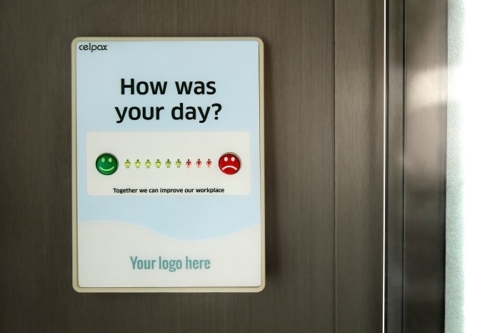10 Tips about Feedback from Clients and Users for Medical Device Manufacturers
Feedback is important. No matter what you’re selling, if you want to improve, it’s crucial to know what customers think of your product and how they feel about the experience they have with it.
Medical devices’ feedback can be precious because they’re often life-saving. In addition, you want to ensure that you’re providing the best possible care for your patients, which means getting regular feedback from them and their caregivers.
Medical device manufacturers must ensure that their products are meeting their performance goals, being used correctly by patients and caregivers, and being well received by the market. One way to achieve this is through post-market clinical follow-up and post-market surveillance. However, customers or clients using your device can also receive feedback or complaints as part of their daily lives (such as family members who use an ostomy pouch or an oxygen tank). It can also come from clinical research studies where participants use a medical device for a specific amount of time under controlled conditions. These are just as much important to work on the official studies.
Seeking feedback from correct users is the key
If things were ideal, we would be receiving feedback directly from users. But, often, that doesn’t happen. After you have launched your device, it is more than likely that you have to seek feedback actively. Hence choosing the demographic is crucial.
Each medical device goes through a few levels of purchase, so each level of user/purchaser is an important source of information. However, end-user feedback is one of the best ways to improve your product. After all, they are the ones who will use your device.
However, picking the end user and, more importantly, whose opinion matters more is not straightforward. Take pacemakers as an example. A patient with heart disease might have one implanted in their chest by a cardiologist or surgeon; however, their primary care physician orders medications and supplies for them. So, both their experience with the pacemaker’s performance and the patients are valuable to the manufacturer.
Finances are also a part of the “user experience” we want to pick out. For example, the doctor might order equipment from an outside vendor (e.g., a surgical supply company) and the hospital or clinic pays for those items through insurance reimbursements instead of directly out of pocket by the patients themselves. So, how cost-effective the device is depends on several factors. A manufacturer will have to keep all of them in mind.
Suppose you are manufacturing one or even a few devices. In that case, a good thing to remember is that user feedback comes from a wide range of sources, including customers, patients, surgeons, and staff who are responsible for using the product after it’s been made. Also, the user may not always be the customer. So, make sure your feedback collection method includes the correct user.
Identify the best ways to get feedback from your users

After you have successfully identified who your end users are, it’s time to get the feedback. Again, you can try different methods, including surveys, interviews, questionnaires, etc.
To get the most out of feedback, you must approach it from as many directions as possible. You should use various methods to survey your audience and collect data that can help improve your product or service in multiple ways.
Here are some examples of things you want to focus on:
User experience
You might want to survey users about their experiences using your product or service so that you can identify areas where improvements could be made. Use a simple survey sheet with clear checklist points to get more accurate data. You can ask for clinical data collected by hospitals as well. This is more appropriate for higher-class devices.
Product performance
If users are having trouble using your product or service, this is another area where feedback will come in handy for improving how things work.
Marketing campaigns
Market research is an excellent way for medical device manufacturers to learn what people think about their brands as well as their competitors’ brands.
Participants should be representative of your target population.
When you’re testing a medical device, it’s important to ensure that the people testing your product represent your target population.
For example, if you’re developing a new blood pressure monitor for children, try marketing them at children’s hospitals and pediatric wings or getting feedback from parents through social media. While user feedback is necessary, medical device companies benefit from knowing how customers feel about the product they are buying. So, make sure you include key customers like parents, providers, doctors, etc.
In other words, it’s important that research study participants reflect the demographic most involved.
Details are key

To get in-depth feedback from clients and users, consider using various questions relevant to clinical outcomes, risk management, safety data, etc.
Whether doing a broad and general survey or in-person interviews, have a selected set of questions to get standard and relevant data.
You should be able to use this raw data to build a comprehensive report. To get the most out of the feedback from clients and users, try these two approaches:
- Open-ended questions: You can use these questions during a workshop or focus group, and the participants will have time to think about their answers before answering. They’re great for getting detailed information from participants that you might not receive through other methods (such as multiple choice) and are best reserved for a select few (professionals).
-
Multiple choice/rating/checklist/ranking: These are useful because they provide quick results that can be analyzed quickly after data collection is complete—they’re also easy for clients or users to understand when compared with open-ended questions. They’re beneficial if you need quantitative data from the general mass.
Plan how you can follow up on issues arising when getting user feedback.

As a medical device manufacturer, you want to ensure that your users have a positive experience with the product. However, it’s also important to ensure they know you’re listening and can help them if something goes wrong. To do this, it’s helpful to have a plan in place on how you can follow up on issues that arise when getting feedback from users.
Here are some tips for how you can plan to handle complaints or issues when getting user feedback:
- You may want to create an issue-tracking database in which you log issues and assign them to team members who will investigate them further. Have a system in place to address all concerns.
- Many times, there is nothing wrong with the device itself. Instead, it’s the device usage. Systematic misuse, faulty printing of technical documentation, differing structures from similar medical devices, etc., can give false positive results. A prompt investigation should handle the issue.
- Create an easy way for your team members (and customers) to communicate with each other.
- Look For Patterns: Once you’ve collected some responses, look for patterns in the data rather than focusing on individual comments. After a pattern is established, a pmcf evaluation report should help you get on track.
Prepare for problems and complaints with creative solutions.
In the medical device industry, clients and users are some of your best sources of feedback. While this is great news for you, preparing for problems and complaints is also important.
Prepare a thorough risk management program and make sure to assess all patient-reported outcomes along with available clinical data.
Use feedback to improve the user experience with your medical device

Feedback is a great way to improve your product experience and thus the level of satisfaction with your product. Keep in mind that improving user experience is not just about making changes to one or two products; rather, it’s a continuous process that includes every aspect of your company.
End users are likely quite knowledgeable about what they find useful about a medical device, so their feedback should be taken into consideration while designing the quality management system. It could be something as simple as including more documentation with the device or something as substantial as changing some aspects of how you manufacture devices.
Ensure you get the right information in the right format as you gather user feedback.
As you gather feedback from clients and users, ensure you are getting the right information in the right format.
- Current client: “I need a new device because my old one is broken!”
- Former client: “I was very happy with the service provided by your company, but I will not be buying another product from you again.”
- Future client: “Here’s a list of features I’d like to see on your next model of this product.”
Getting good user feedback is a meaningful way to ensure that your medical device is meeting its performance goals, being used correctly by patients and caregivers, and is being well received by its market
Getting good user feedback is a meaningful way to ensure that your medical device is meeting its performance goals, being used correctly by patients and caregivers, and being well received by its market. Users can also help you improve your product based on the experiences they have with it.
Take the time to listen to the needs of your clients and users – they are often able to provide valuable insights into how you can make improvements in all areas of business, including marketing, sales, customer service, and quality control.
Conclusion
Getting feedback from clients and users is an important aspect of improving your medical device. You can use this information to improve the product or even change directions entirely based on what you hear from your audience.
